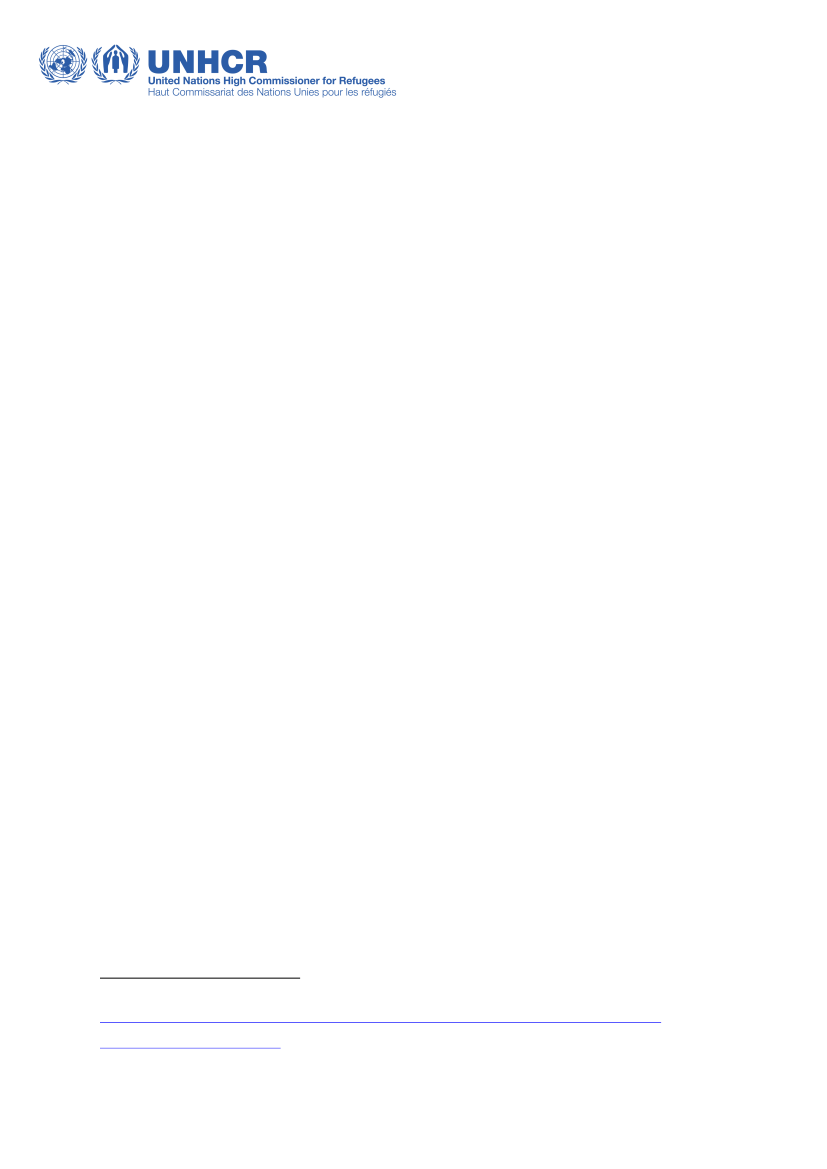
Fact Finding Mission Report of the Danish Immigration Service,
“Eritrea –
Drivers and Root Causes of Emigration, National Service and the
Possibility of Return. Country of Origin Information for Use in the Asylum
Determination Process”,
UNHCR’s perspective
1. In November 2014 the Danish Immigration Service (DIS) published a fact finding mission
(FFM) report on its website, entitled
“Eritrea –
Drivers and Root Causes of Emigration,
National Service and the Possibility of Return. Country of Origin Information for Use in the
Asylum Determination Process”
(hereafter: “the report”).
1
The report summarizes
information gathered by the FFM delegation in Ethiopia (20-27 August 2014), London
(September 2014) and Eritrea (1-17 October 2014).
2. UNHCR welcomes efforts by State asylum services and others to ensure that States and other
stakeholders in asylum procedures have access to high quality country-of-origin information
(COI). Accurate, reliable COI that is also detailed and balanced is a precondition for high-
quality decision-making on applications for international protection. In addition, quality COI,
available and accessible to all decision-makers, legal aid providers and others, has the
potential to contribute to more harmonized adjudication of asylum claims.
3. Against this background, UNHCR welcomes the decision of DIS to produce a COI report in
English on Eritrea, in light of the fact that asylum-seekers from Eritrea are amongst the top
nationalities of asylum-seekers in Europe and elsewhere.
2
UNHCR does, however, have a
number of concerns as regards the methodology used by DIS in the report. These concerns
are outlined below.
4. The report contains
references to “a UN agency” in Asmara, and meeting notes with a “UN
Agency” are included in pp.
31-33 of the Annex to the report. For the sake of clarity and to
avoid any confusion amongst readers of the FFM report, UNHCR wishes to emphasize that
the information ascribed to a “UN Agency” is not information provided by UNHCR (despite
the fact that the
notes of the meeting with a “UN Agency” contain references to “UNHCR
registered” refugees in Shire). UNHCR is not the (Asmara-based)
“UN Agency” referred to
throughout the report.
5. At the same time, notes of meetings between UNHCR in Addis Ababa and in Shire, Ethiopia,
are contained in the Annex of the report (pp. 69-73). However, in the main text of the report
(pp. 1-20 pages), the information provided by UNHCR in Addis Ababa is not used or referred
to, and there is only one general reference to UNHCR Shire as a source of information. In
UNHCR’s view, the main text of the report (pp. 1-20)
could have benefited from inclusion of
UNHCR’s Shire’s description of the procedures for Eritrean arrivals. This information is
however not referred to in the report. Instead, the report relies on speculative statements of
1
2
Danish Immigration Service,
Eritrea
–
Drivers and Root Causes of Emigration, National Service and the Possibility of Return Country of
Origin Information for Use in the Asylum Determination Process Report,
5/2014 ENG, November 2014,
http://www.nyidanmark.dk/NR/rdonlyres/B28905F5-5C3F-409B-8A22-0DF0DACBDAEF/0/EritreareportEndeligversion.pdf.
See e.g. UNHCR,
Sharp increase in number of Eritrean refugees and asylum-seekers in Europe, Ethiopia and Sudan,
14 November 2014,
http://www.unhcr.org/5465fea1381.html.
1/3